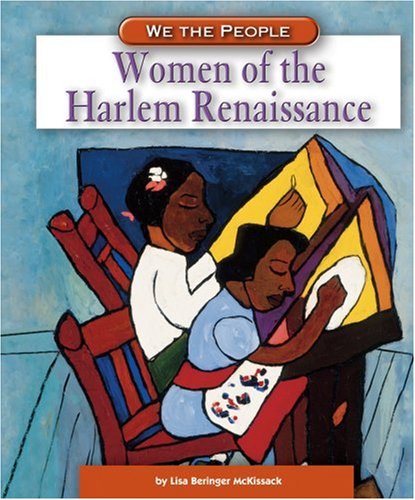Inspiring Young Readers
 posted on 20 Oct 2016
posted on 20 Oct 2016
Women of the Harlem Renaissance by Lisa Beringer McKissack
Introducing younger readers to a subject as complex and, for UK readers in particular, as distant in both time and geography as this, is no easy task. Admittedly, Lisa Beringer McKissack’s Women of the Harlem Renaissance has been produced primarily for US children but it undoubtedly has a role to play in helping to open up this important flowering of Black culture to younger readers on this side of the Atlantic.
The book is a slim 50 page glossy, pictorial production and a part of the ‘We The People’ series that tries to make US history accessible and interesting for the younger reader. In this particular edition we get the chance to take a brief look at the lives and accomplishments of five important and hugely talented Black women – Nella Larsen, Jessie Fauset, Zora Heale Hurston, Augusta Savage and Bessie Smith – placed in the context of this particular moment in time. The opening section of the book tries to give an easy to understand definition or historical perspective of this thing we now call the Harlem Renaissance and McKissack manages to do it without clutter or unnecessary complications.
The five pen portraits that follow are all concise and unintimidating introductions to their work and are written to inspire the young reader to go further and to explore what else lies behind these windows. I have to say that I didn’t know about the life and work of Jessie Fauset and so I’m indebted to McKissack for introducing me to this remarkable woman who was an author and editor, primarily during the inter-war years when she edited the literary journal, The Brownies’ Book. This was an influential and seriously high quality periodical that employed W.E.B. DuBois as it’s literary editor. From 1940 onwards Fauset turned her attention and skills to teaching, a profession she stayed with until retirement – she died in 1961 at the age of 79.
The final 8 pages or so of the book are given over to some useful aids to understanding the historical context . There is a nice, uncomplicated twenty year time line, a glossary of terms, a list of important names in the movement more generally and a few selected ‘did you know’ facts that fill in some of the gaps. The book ends with a valuable list of other publications and some hints about where to go for more detailed background.
I just love the fact that books like this are finding a distribution in the UK through the likes of organisations like Letterbox Library – understanding the way ideas generated in places far away from where you live move around and how culture helps to disseminate revolutionary ideas is a vital way of giving young readers a whole new perspective.
Terry Potter
October 2016